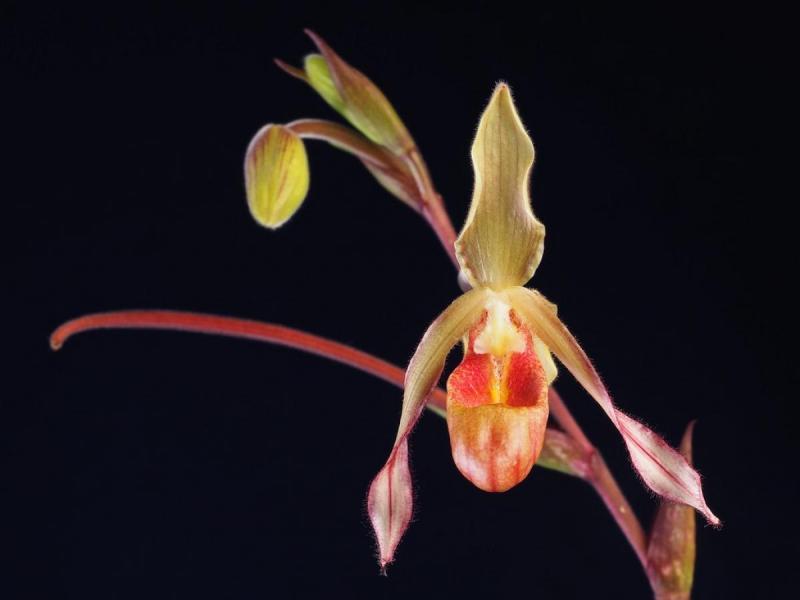Phragmipedium lindleyanum
Also known as: Lindley's Phragmipedium or Paphiopedilum kaieteurum Selenipedium lindleyanum var. kaieteurium Selenipedium kaieteurium Phragmipedium lindleyanum var. lindleyanum Selenipedium kaieteurum Phragmipedium lindleyanum var. kaieteurum Phragmipedium kaieteurum in the subfamily: Cypripedioideae
General Information
Lindley's Phragmipedium is a medium sized sympodial cool to warm growing lithophytic or terrestrial orchid belonging to the sub family Cypripedioideae. It is named after the English Botanist in the 19th century.
Plant Description
Sympodial. Grows to 91cm. Each new growth has numerous erect leaves that grow to 46-61cm long
Flowers
Numerous long lasting blossoms appear
Substrate(s)
- Treefern
- Sand
Care Notes
These orchids have a fine root system that can quickly die back if left dry for too long, but also does not like to be kept wet, so water regularly but ensure that the mix is dry before watering.
Climate
Grows at low to high elevations. Rainfall ranges from 81mm to 244mm per day, heaviest in May and lightest in January. Humidity ranges from 77% to 89%, highest in June and lowest in March. Temperature ranges from 15C to 29C, highest in February (18C to 29C) and lowest in September (15C to 27C).
Fertiliser
Apply liquid based fertiliser per recommended directions. They can benefit from a high phosphate fertiliser leading up to flowering season, followed by a high nitrogen fertiliser when new growth appears, and a balanced fertiliser in other times. These orchids can also tolerate slow release fertiliser applied 1-2 pellets per cup (250ml) of media.
Apply fertiliser regularly at half strength year round.Potting
These plants can be sensitive to repotting though should not require repotting regularly. Repotting should be done when the mix has broken down to the point that it doesn't absorb water or holds onto water for far too long, usually the plant shows a decline in growth as well.
The mix should be free draining, with a blend of 30% inorganic ingredients such as coarse sand, gravel or perlite, mixed in with about 70% organic ingredients such as peat, leaf litter or decomposed bark. Avoid commercial potting mixes as they can vary wildly and may contain "wetting agents" that can hold onto water for loo long, causing rotting and stunted growth.
Use water retentive media such as moss to prevent roots from drying out quickly














